At the start of my year long project I had the thought to do some damage to some negatives to see what results it gave. I was inspired by apiece of work called Death Of Sun I (1964) by artist Ku-lim Kim in the Tate modern on a trip last year in which the artist had burnt the painting that gave some unusual results.

Looking further into it there have been other photographers who have left their negatives in the street where the image was made to get weathered and pick up environmental damage. Others took their negatives and prints and dropped them in the river that they were photographing to be affected by the conditions in the local stretch of water.
Reluctance
Whilst I thought this might be a good idea, I can’t say that I relished the thought of deliberately attacking my negatives that I’d spent time making into photographs worthy of being captured on film. Film isn’t inexpensive and to destroy it on purpose seemed wasteful and irresponsible. As a result of this conservative way of thinking I switched to working on the prints that were created from the negatives.
Altering the paper after the enlargement by means of folding or weaving or before projecting from the negative onto the paper gave me some good progress to document and it meant I wasn’t damaging precious film. Weaving printed images together was also enjoyable although very time consuming and I am still contemplating different ways to achieve results with this.
Over the Christmas break between semesters 1 & 2 I went out with my Canon A1 35mm, my Bronica ETRS 645 ad my digital camera to capture interesting images. I found some good places and some not so great places too. More of these in a later post.
Whilst out visiting the local Tesco to buy some groceries I parked my car in the car park and noticed it there was a huge flooded part of the tarmac covered area that was underwater by around 4 or 5 inches. Upon returning to the car I decided to swing the car into the puddle to take a reflection photo of my car. It’s only a mediocre rep car being a vauxhall insignia but I thought I’d try it anyway. My cameras came out of the boot, the 5D Mkiv on my shoulder strap and the A1 went into my coat pocket after taking a shot with it.
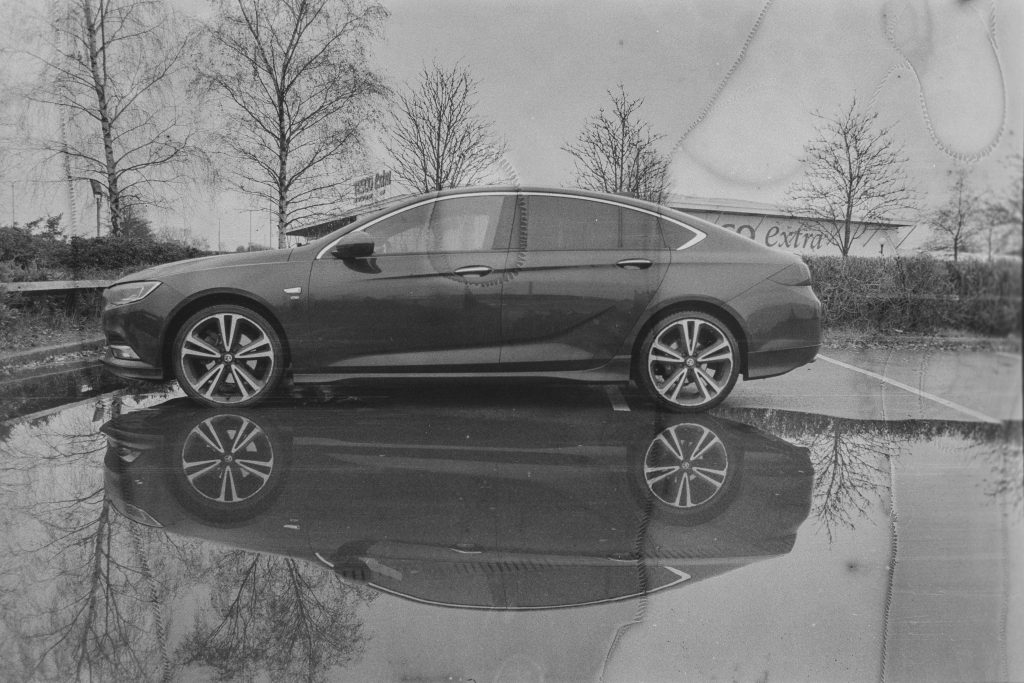
Hydrophobia
Trying to get a lower angle with my digital I squatted, unbeknownst to me my thigh pushed the A1 up and out of my pocket so I heard a plop and splash before realising what had just happened. A quick dart to pick it up and immediately shake off the majority of the water meant it did not completely fill, I hoped. There was still one or two shots left of the 36 exposures on the Ilford HP5 so once dried off with my woolly hat I wound the film back in to the canister quickly so I could safely open up the rear and begin to assess the damage. I was also saying naughty words calling myself names for having been so ridiculously careless.
Upon arriving home I headed to my little office, took the battery out, whipped the 28mm lens off and then opened the back and gave everything a good wipe down with a lint free cloth. I blew it out with my rocket blower duster and then placed it all above a radiator to dry out. I contemplated using a hair dryer but worried that the water might be blown into areas it hadn’t already got to. So I lay it with the open back downwards over the rad.
The film canister felt wet but I doubted that any water would have got past the light seal. Hmm, that assumption was a bit wrong.
Processing It
On the Sunday I mixed up a fresh batch of Ilford PQ Universal Developer at 1 : 19 concentration, some new stop and fix fluid too. Once complete and ready for use I took the large paterson tank , the spools I’d use and a pair of scissors into the light tight downstairs toilet.
With three films to get into the tank I’d set up two reels for 35mm width, one for 120 film and the last for 35mm just to sit on top to stop the films staying at the top of the tank.
The 120 Ilford HP5 that I’d used in my Bronica ETRS 645 in Leeds on Saturday came off the spool easily and ran into the paterson reel smoothly. This went into the tank on the centre tube.
The next film was the 35mm Ilford HP5 + that hadn’t got wet but was the next film through the camera after the drying out process. This came out of the canister and went onto the reel smoothly too, this is going too well.
The last film was the puddled film and as I pulled the leader out of the canister I could feel it crackling and being a bit sticky. The water HAD got in and must have affected the emulsion, maybe making it stick to the front of the film immediately behind it. I decided to not switch the light on to check, for obvious reasons, and continued to spool it into the paterson reel.
With all three films and a space saving reel on the top I sealed up the lid and prepared to hit them with the chemistry. Using Massive Dev Chart app programmed with my settings for these films I developed them for 4 mins 30, Stopped for 1 min, Fixed for 5 minutes and washed for 15 minutes.
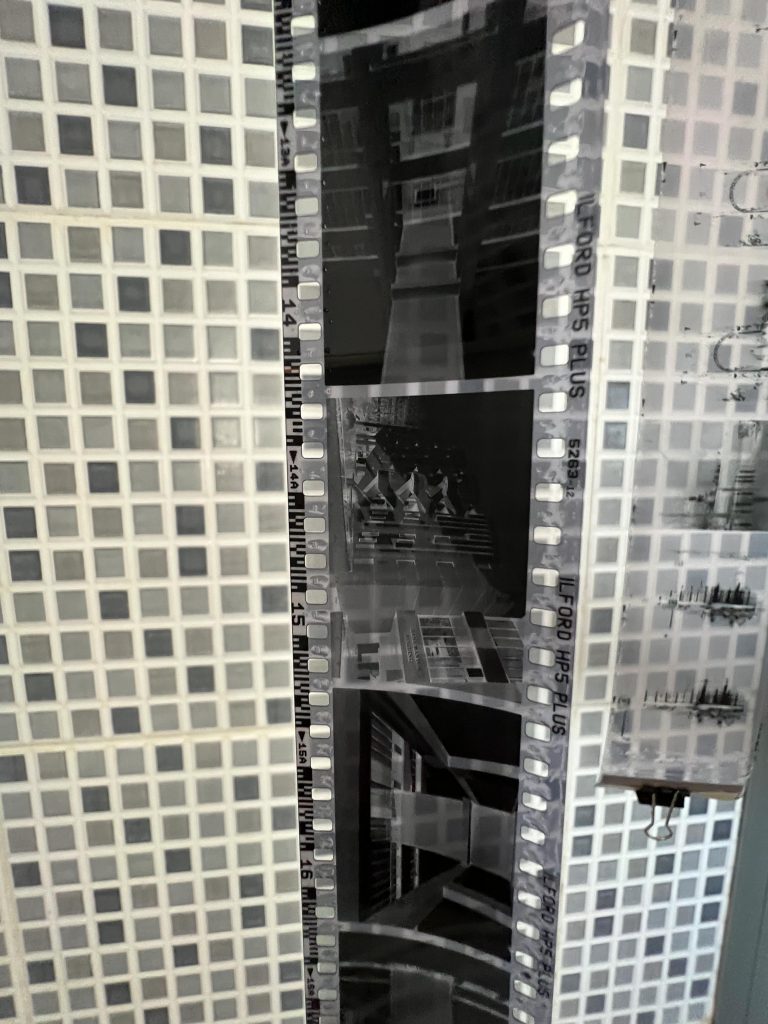
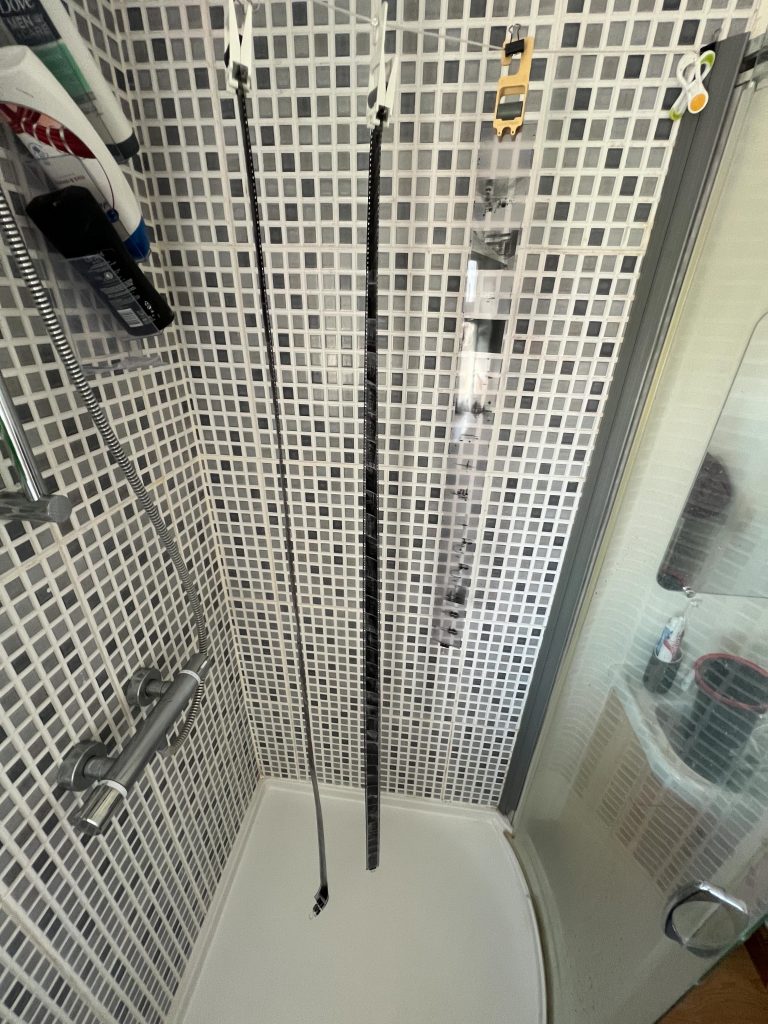
I hung them to dry in the shower on a washing line affair and left them alone. Much later on in the evening after a trip to Chester to fit some shelves in my son’s uni digs I returned and cut them to the right length to fit int the Kenro sleeves. I promised I’d DSLR Scan them on the Monday night.
DSLR Scanning
This is what I did and the results of them were a bit sketchy.
The 120 I’d used in my Bronica to photograph the floods at night were very underexposed and I think that if I use it in the future I may overexpose by one stop.

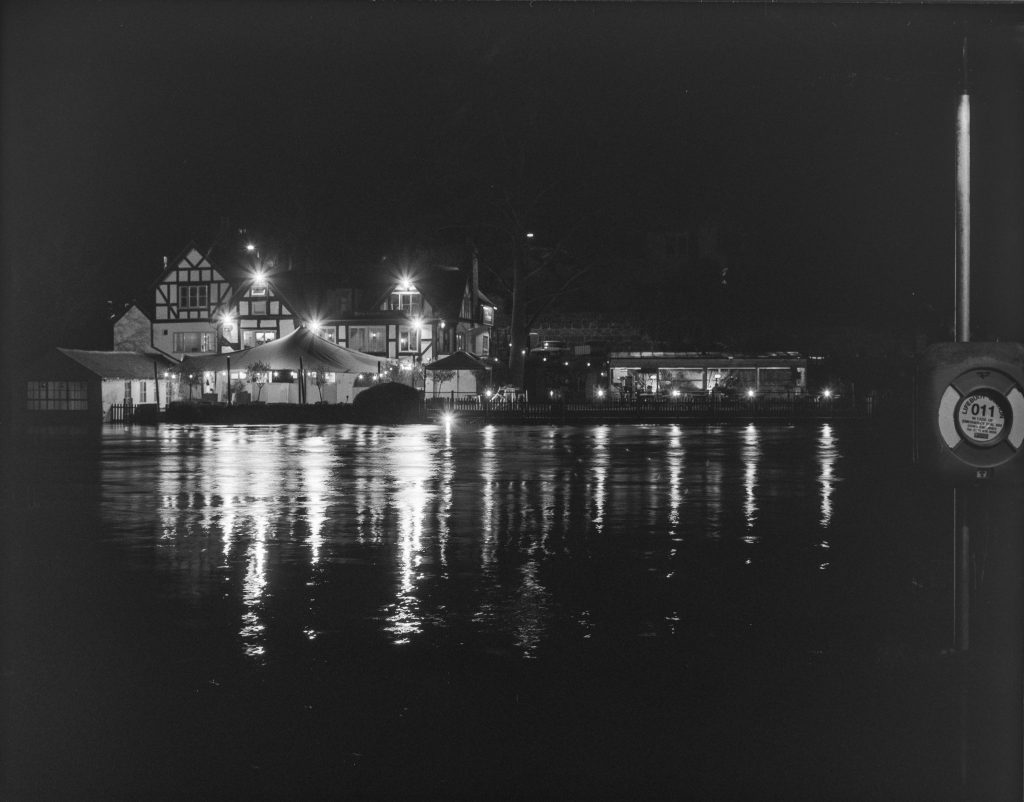
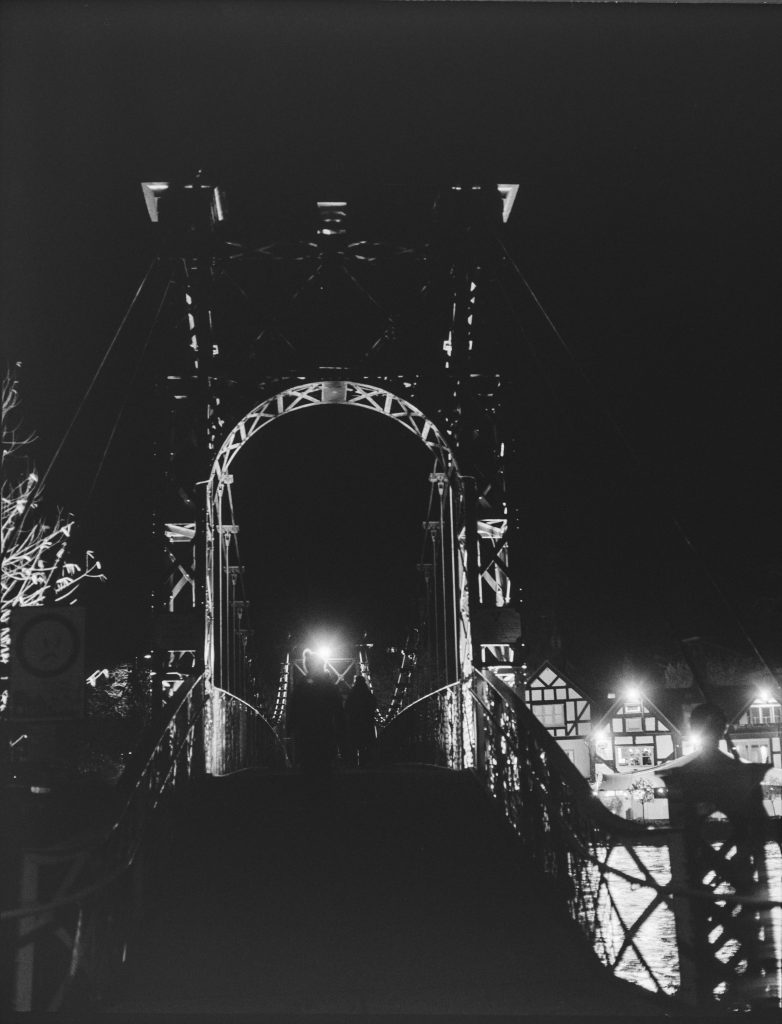
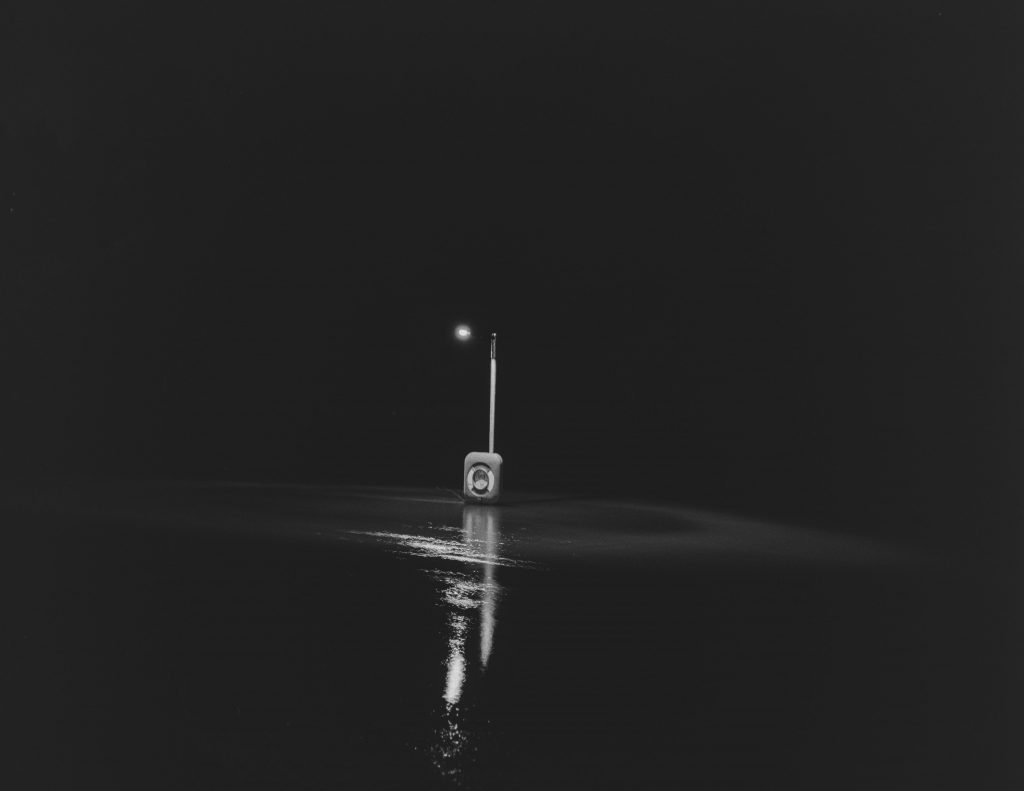
The 35mm film that was puddled had water stains all over the images and marks, cracks, hair, dust and general tide marks.

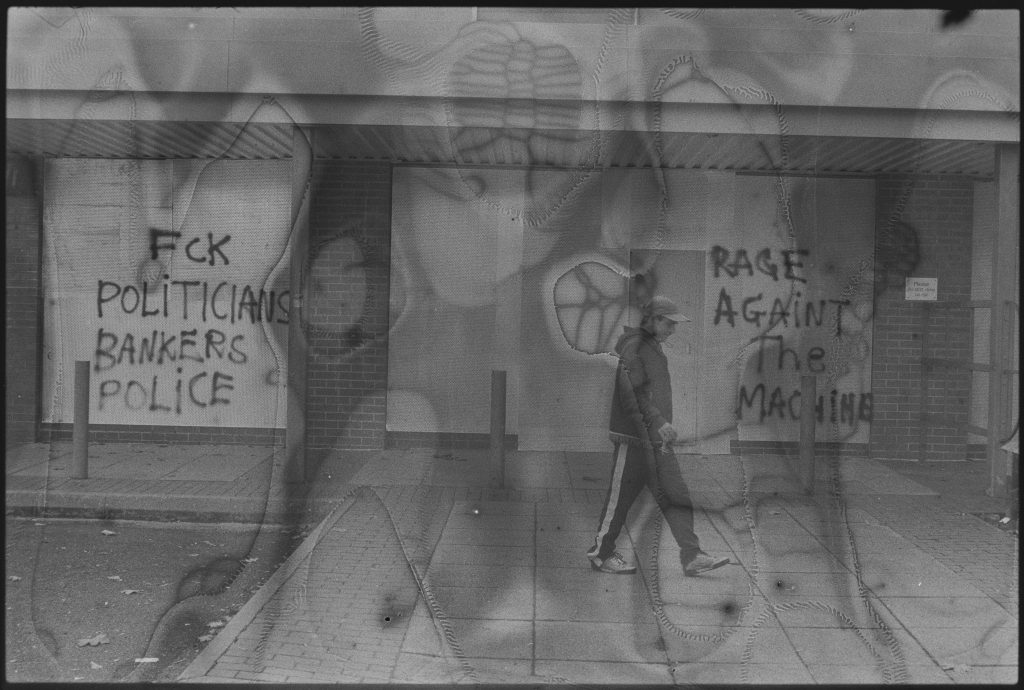

The last 35 mm film from Leeds looked ok but upon further inspection I noticed that they all had a white line or two going across the whole width of the image. It was thin but noticeable to me. Looking at it, it appears that something has scratched the emulsion as the film was advanced from the canister to the take up spool so I took apart the Canon A1 again and blew it out properly, taking a lint free cloth to wiping anything out that looked like a small chipping. This dismayed me a little as after I took out this film I put in an expensive Cinestill 800T to use in the city centre at dusk and evening, I wonder whether that film has been damaged in a similar fashion. I hope not.
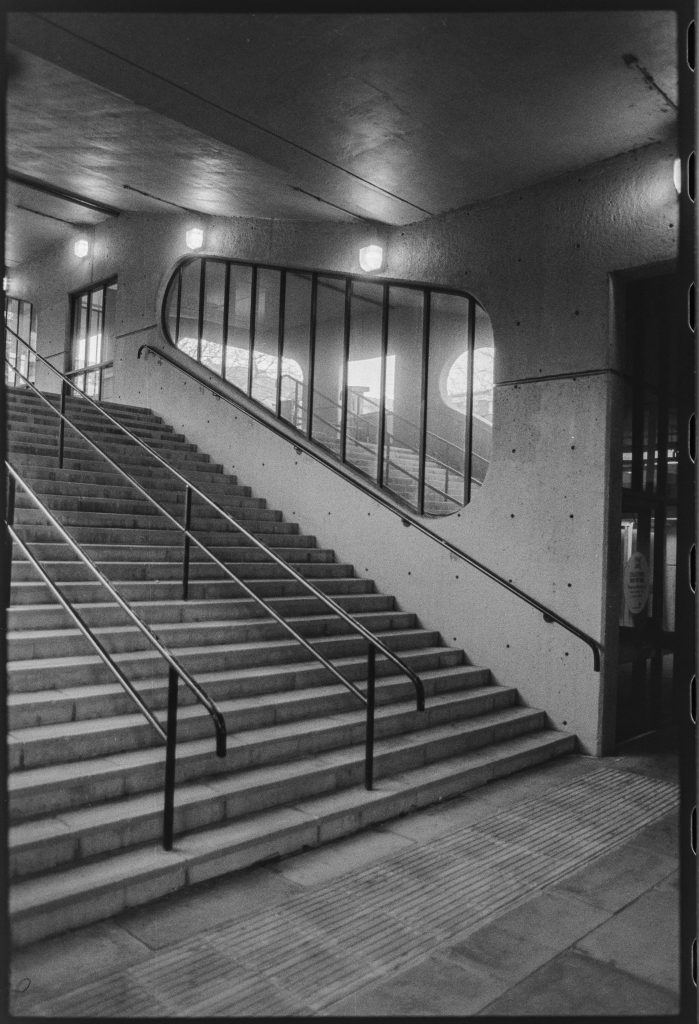


Whilst scrutinising these images I also noticed a big black mark in the top edge of every one, it was the same shape, size and everything so must have been a camera issue. Whilst I had it open on the desk checking I also wondered what this anomaly could be. Searching around the lens and the back of the camera I couldn’t find anything immediately obvious but when I opened the shutter curtain using Bulb mode, I noticed a bit of lint/fluff that was stuck just behind it so when the shutter opened this piece of fluff was masking off that part of the film. Looking back now at the contact sheets from last year, this arrived in my second film. Unbelievably, this artefact has been present on every single picture taken since then. How on earth did I not spot it, it’s not small, it’s not hidden, it’s very obvious. Whilst the curtain was open I pulled the fluff out with a pair of tweezers and cleared it. Hopefully it should not appear in any more photos. Shocking that I never spotted it before.
The water damaged film produced some nice images and although they have this water damage I think that it suits the grittiness and subject matter of them. I have a few images of water, the River Severn or puddles etc that are impacted by this. Also in there are photos of places around the town that I used to knock around when at school. The water stains are particularly prevalent on some of these. Whilst I was talking to Niki today at University we were discussing why I took these images and I could only think that these, along with the images of “Tin Town” are nostalgia and a look back to my childhood.
The water marks might represent my history being washed or cleansed, or are they being stained by liquid? Why did I interpret it like this, is it due to Dad’s drinking problem that he’s always had? Is it the liquid (alcohol) that I blame for him being poorly and having so many health issues over the years? The effort Dad expended daily to ensure he wasn’t far from a Banks’ pub over the years didn’t really sink in with me until a couple of years ago, when I thought about how it might be interpreted as selfish by today’s standards. I’m not oblivious to the fact that he was brought up like that by his father to be a traditional masculine man who drinks loads of beer and doesn’t hang out the washing. I really don’t know if this affects my photos but it’s interesting how this has cropped up in my mind when contemplating the images created by an accidental water/camera collision.
Conclusion
After all that reluctance to damage my negatives on purpose, here I am with a set of 36 that were stuck together in the can and have been irreversibly damaged by the dunking they received. Is it luck? Bad luck or good luck? The camera survived at least and I now have some damaged negatives so I’m going to say it was a good bit of fortune. At least it was a happier ending than when my drone disappeared in the River Severn last year. (video)
A future post will contain information about other artists that have damaged negatives and techniques used for damaging negs and prints. There’s more of it about than I’d initially considered.
Some more info to come will include my reading of books to do with Brutalism and Concrete buildings..
[…] about this film of negatives can be read in this previous post but I felt that this was an interesting direction to go in for the year long project. Is it […]
[…] the long scratch though. At first I thought it was that original scratch from my Canon A1 after I dropped it in a puddle, then I realised that this was a completely different […]